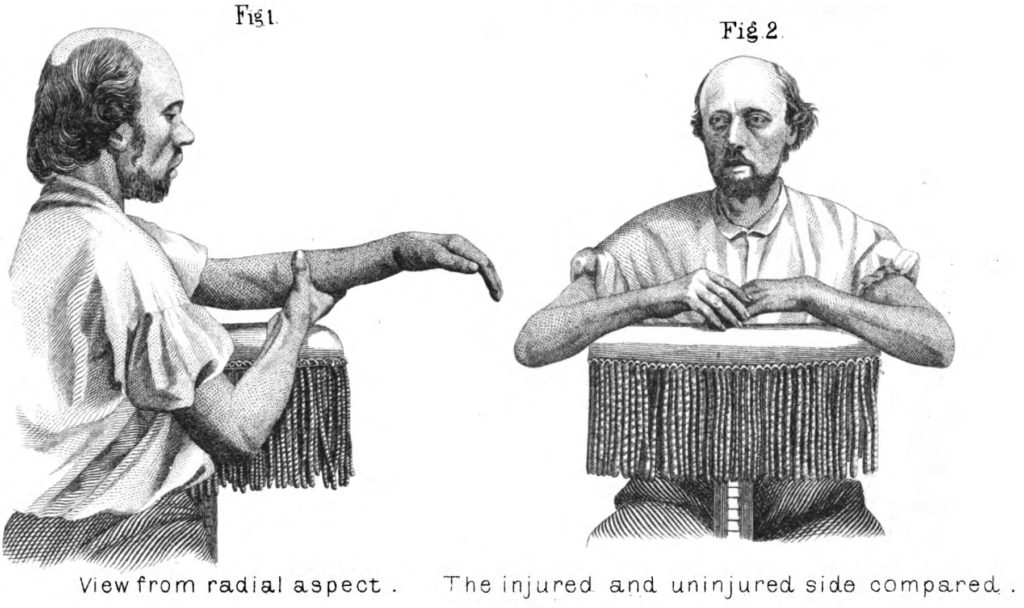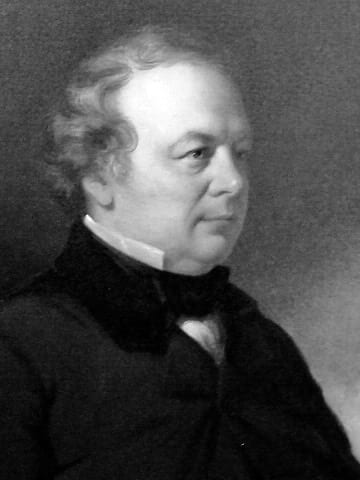Edward Moore
Edward Mott Moore (1814-1902) was an American Surgeon.
Edward Moore was a prominent New York State physician, teacher, investigator, and contributor to the community. Deeply interested in matters affecting the public welfare and in Rochester he was familiarly known as the “Father of the Parks”
Moore was an outstanding teacher of surgery and became professor of surgery aged 28, in 1842. Between 1842 and 1883, was appointed professor of surgery successively at four different medical schools.
A leader by nature, Moore served as president of the American Medical Association; the Medical Society of the State of New York; was founder and president of the American Surgical Association and the New York State Board of Health.
Best known for his eponymous description of the Moore fracture in 1870; fracture of the lower end of the radius with ulna styloid fracture and distal ulna subluxation
Biography
- Born on July 15, 1814 in Rahway, New Jersey
- Rensselaer institute, Troy, New York
- 1838 – MD, University of Pennsylvania
- 1842–1854 Professor of surgery, Woodstock medical school, Vermont
- 1857 – Professor of surgery, Starling Medical College, Columbus, Ohio
- 1859-1883 Professor of surgery at University of Buffalo
- 1857-1902 Surgeon-in-chief at St. Mary’s Hospital
- 1884 – President of the American Surgical Association
- 1886 – Third president of the New York State Medical Association
- 1887 – Organiser and first president of the New York State Board of Health
- 1890 – President of the American Medical Association
- Died on March 4, 1902 in Rochester
Medical Eponyms
Moore fracture
Fracture of the lower end of the radius with fracture of the ulna styloid; subluxation of the ulna head; and entrapment of the ulna styloid process under the annular ligaments.
In 1869, Edward Moore examined the fractured wrists of a 45 year old patient who in a ‘paroxysm of insanity’ jumped three stories from St. Mary’s Hospital
The projection of the wrist backward was that of an extreme case of [Colles] fracture, and the ulna was carried well downward and outward from the axis of the fore-arm. The fracture was transverse and the surface of the lower fragment, which was about half an inch in length, came in contact with the periosteal surface of the back of the upper fragment or main shaft.
The next step in the manipulation was to press the displaced fragment into its place. I was surprised to find a resistance which seemed like muscular action. This being manifestly impossible, the cause was again sought for by a repetition of the movement, when the same result was produced giving an elastic rebound.
The solution was found in the peculiar position of the ulna, its luxation and ligamentous entanglement.
The cause of rebound now became manifest; for the styloid process was so far projected as to catch the fibres of the annular ligament, and the ulna being prevented from rising, forced the wrist back.
Moore, 1870

Moore then conducted cadaver experiments in order to evaluate the variation from the Colles-type distal radius fractures:
I subjected the arm of a cadaver to a force gradually applied, after having made a fracture of the radius just above the wrist-joint. This was effected by strapping the arm firmly down and attaching a lever to the hand, then bending the latter well back with a slow but irresistible force.
When the internal lateral ligament and triangular fibro-cartilage yield, the annular ligament becomes slipped over the head and on the
styloid hook. In order to determine the succession of movement in the ligamentous rupture, I subjected the arm of a cadaver
to a force gradually applied, after having made a fracture of the radius just above the wrist-joint. In order to determine the succession of movement in the ligamentous rupture,
The bulging of the ulna outward and downward preceded the rupture of the internal lateral ligament. But the fascia of the fore-arm lying on the ulnar head became stretched, and fibres of the annular ligament slipped over it. As the force was continued, a double snap, loud and sharp, was produced by the breaking of the internal lateral ligament and the triangular fibro-cartilage – apparently in the order stated. The end and internal surface of the styloid was broken off. The annular ligament at the same moment was caught on the styloid, presenting precisely the appearance shown by the autopsy.
If there should be an arrest of movement before ligamentous rupture, the difficulty is one of simple Colles fracture uncomplicated with luxation of the ulna.
Moore, 1870
Edward Mott Moore Award (1968)
Each year, Monroe County Medical Society (MCMS) presents its distinguished Edward Mott Moore Award to both a physician and a layperson whose lives reflect the qualities exemplified by Dr. Edward Mott Moore as a physician, teacher, investigator, leader and contributor to the community.
The highest honor bestowed by MCMS, in recognition of outstanding and dedicated service to the medical profession and the community.
Major Publications
- Pennock CW. Moore EM. Report of experiments on the action of the heart. 1839
- Moore EM. A luxation of the ulna not hitherto described, with a plan of reduction and mode of after treatment; including the management of Colles’ fracture. Transactions of the Medical Society of the State of New York. 1870; XV: 233-245
- Moore EM. Treatment of the clavicle when fractured or dislocated. Transactions of the Medical Society of the State of New York. 1870; V: 107-111
References
Biography
- Hayes CD. Edward Mott Moore, Nineteenth Century Medical Student. University of Rochester Library Bulletin. 1963; XIX: 1
- Obituary. Edward Mott Moore, M.D. Boston Med Surg J 1902; 146: 297
- Rutkow IM. Edward Mott Moore In: History of Surgery in the United States, 1775-1900, 1992; II: 163
- Bibliography. Moore EM (Edward Mott) 1814-1902. WorldCat Identities
Eponymous terms
- Oaks JF. Observations on the treatment of Colles’ fracture. Medical union. 1873: 246-248
- Hamilton FH. Remarks on Colles’ fracture. Ohio medical and surgical journal. 1877; II: 5-9
[cite]

